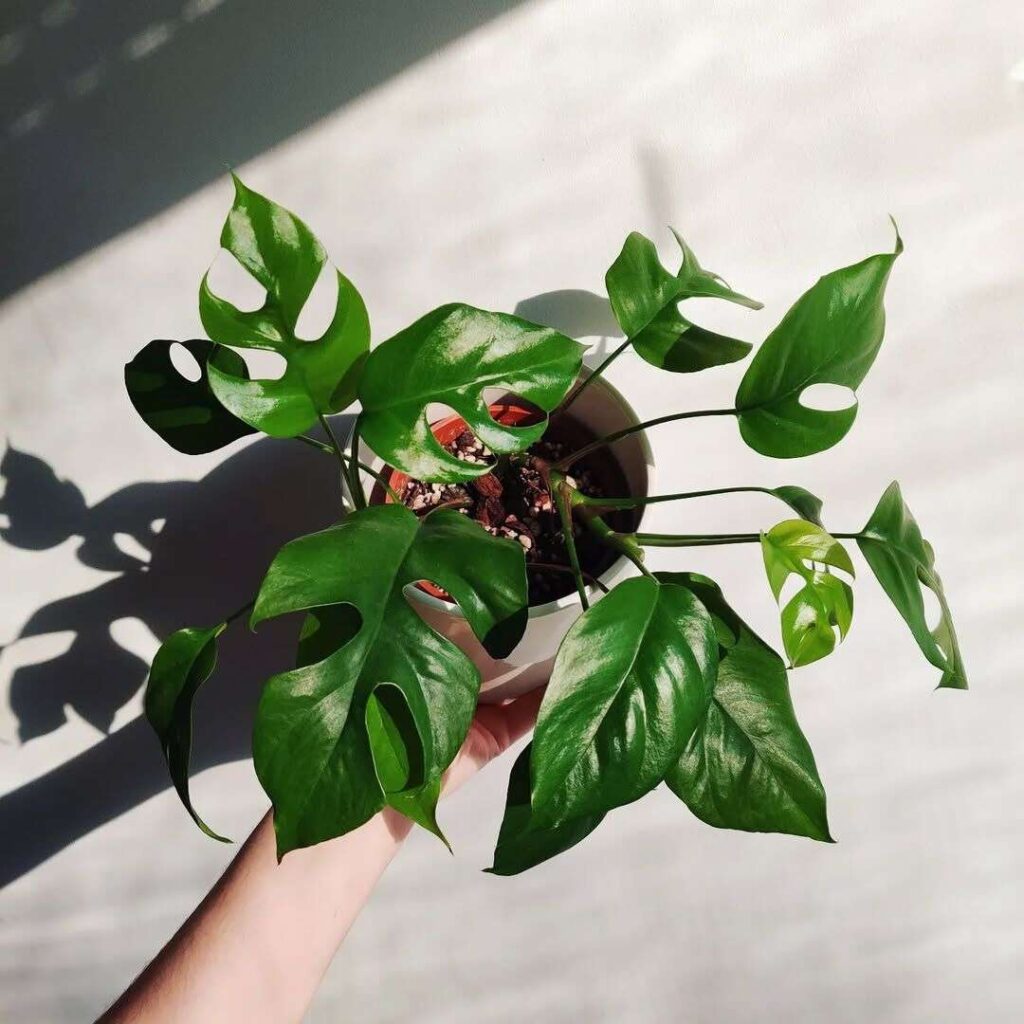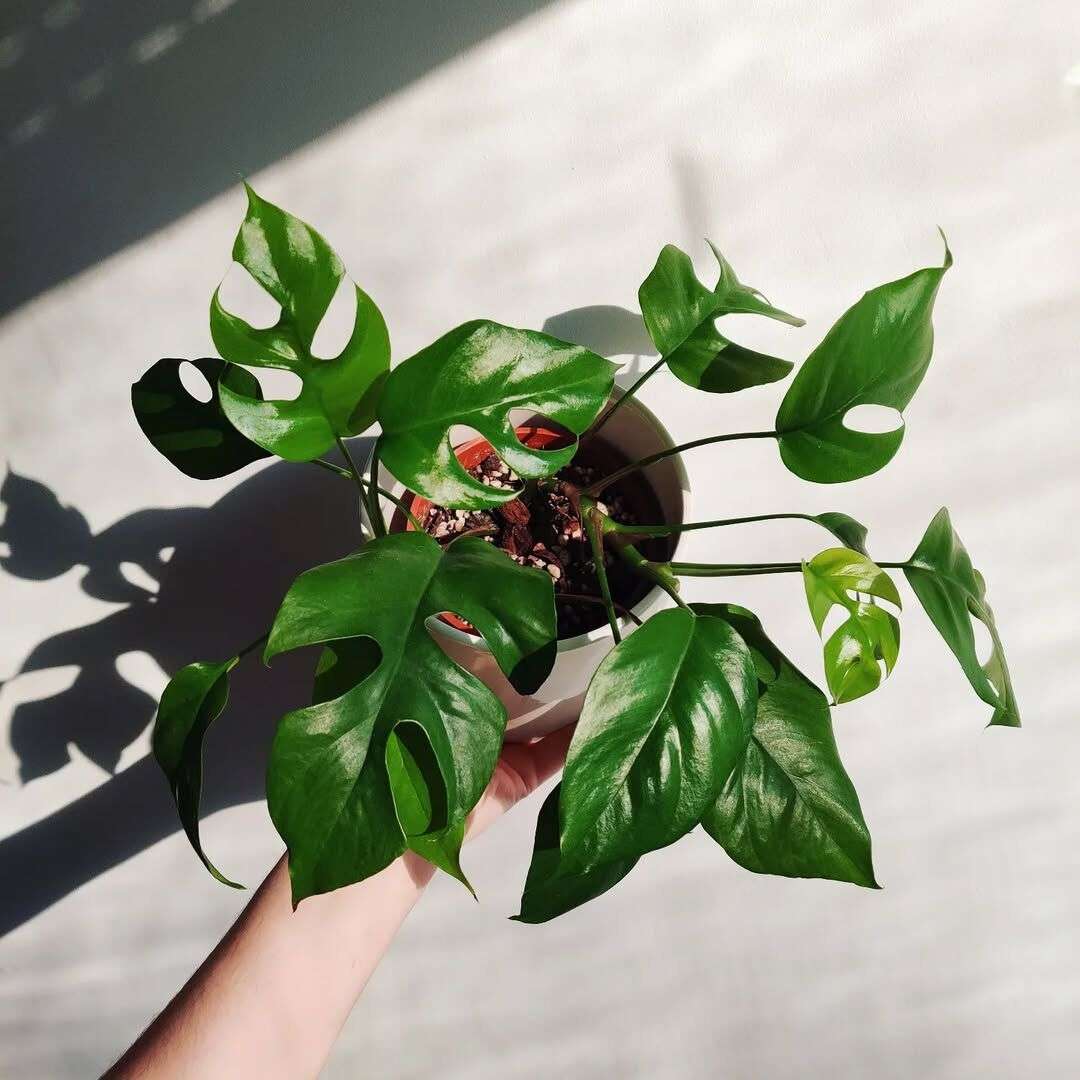Understanding how much light does Monstera need is essential for anyone looking to keep this popular tropical plant healthy and thriving indoors. Monstera, known for its large, fenestrated leaves, requires a specific amount of light to maintain its vibrant foliage and encourage new growth. Providing the right lighting conditions helps avoid common problems such as yellowing leaves or slow growth.
Monstera plants prefer bright, indirect light but can tolerate lower light environments better than many other tropical plants. However, too much direct sunlight can scorch their leaves, while too little light may stunt their growth. Finding the perfect balance is key to keeping your Monstera lush and beautiful.

Understanding Monstera’s Natural Habitat and Light Needs
Native Environment and Light Conditions
Monstera plants originate from the tropical rainforests of Central and South America, where they grow as climbing vines under the dense canopy. In their natural habitat, Monstera receives filtered sunlight through the upper layers of trees rather than direct sunlight. This environment provides bright but diffused light—ideal for their growth.
Adaptation to Indirect Light
Because of their natural setting, Monstera leaves have adapted to thrive in bright indirect light. They capture enough light for photosynthesis while avoiding the harsh effects of direct sun rays. This explains why indoor Monsteras flourish near east-facing or north-facing windows where sunlight is gentle but sufficient.
Effects of Improper Lighting
- Too Much Direct Sunlight: Causes leaf burn, brown spots, and curling edges.
- Too Little Light: Results in slow growth, smaller leaves, and pale or yellowing foliage.
- Optimal Light: Bright, indirect light promotes large, healthy leaves and rapid growth.
Understanding Monstera’s natural habitat helps gardeners replicate these light conditions indoors for the best results.
The Ideal Indoor Light Conditions for Monstera
Bright, Indirect Light Is Best
Monstera plants thrive in bright, indirect light, which mimics the dappled sunlight they receive in their native rainforest environment. Placing your Monstera near a window with filtered sunlight—such as behind sheer curtains or slightly away from a south-facing window—creates the perfect lighting condition. This allows the plant to photosynthesize effectively without the risk of leaf scorch.
Suitable Window Placements
- East-facing windows: Provide gentle morning sunlight that supports healthy growth without overheating leaves.
- North-facing windows: Offer consistent, soft light ideal for Monsteras in low-light homes.
- South or West-facing windows: Best if filtered through curtains or placed a few feet away from direct rays.
Using Artificial Light
For rooms lacking natural light, full-spectrum grow lights can supplement the Monstera’s needs. Position the light about 12–24 inches above the plant for 12–14 hours a day to maintain its vigor. This is especially useful during shorter winter days or in windowless spaces.
Creating these indoor light conditions ensures your Monstera remains lush and vibrant year-round.
How Outdoor Light Affects Monstera’s Health
Transitioning Monstera Outdoors
When moved outdoors, Monstera plants encounter natural light that is often stronger and more direct than their indoor environment. While outdoor light can enhance growth due to its intensity and full spectrum, care must be taken to avoid exposing the plant to harsh midday sun, which can damage its delicate leaves.
Effects of Direct Sunlight
Direct exposure to outdoor sunlight, especially in the afternoon, can lead to:
- Leaf scorch: Brown, crispy patches develop on leaves.
- Fading leaf color: Intense sun can bleach the natural green, causing a dull appearance.
- Stress and dehydration: Increased evaporation stresses the plant if not adequately watered.
Best Practices for Outdoor Light
- Place Monstera in shaded or partially shaded areas where it receives filtered sunlight, such as under tree canopies or porch covers.
- Morning sun exposure is ideal because it is less intense.
- Regularly check soil moisture as outdoor light and warmth increase water demand.
Proper outdoor light management helps Monsteras maximize photosynthesis while preventing stress or damage.
Signs Your Monstera Is Getting Too Much Light
Leaf Discoloration and Burn Spots
One of the clearest indicators that your Monstera is receiving too much light is the appearance of brown or yellow burn spots on the leaves. These spots often start as small patches but can spread if exposure continues. The affected areas may feel dry and crispy, signaling damage from intense direct sunlight.
Curling and Wilting Leaves
Excessive light can cause the Monstera’s leaves to curl inward as the plant tries to reduce surface area exposed to harsh rays. Wilting or drooping leaves may also occur, reflecting stress from rapid water loss and overheating. These symptoms often coincide with dry soil or low humidity.
Faded Leaf Color and Growth Issues
Too much light can bleach the leaves, making the deep green color look washed out or pale. In some cases, new leaf growth may slow or become distorted as the plant diverts energy toward survival rather than expansion.
Key signs of excess light include:
- Brown, crispy leaf edges
- Yellow patches on foliage
- Leaf curling or wilting
- Pale or bleached leaf color
- Stunted or abnormal growth
Recognizing these symptoms early allows you to adjust your Monstera’s location or light exposure to prevent long-term damage.
Signs Your Monstera Needs More Light
Slow Growth and Smaller Leaves
When a Monstera doesn’t receive enough light, its growth rate significantly slows down. You may notice new leaves are smaller than usual or fail to develop the characteristic splits and holes (fenestrations). This occurs because the plant lacks sufficient energy from photosynthesis to grow vigorously.
Pale or Yellowing Leaves
Insufficient light often causes leaves to lose their rich green color, turning pale or yellow. This chlorosis indicates the plant isn’t producing enough chlorophyll due to limited light exposure. Lower leaves are usually affected first, as the plant prioritizes energy for upper leaves.
Leggy or Sparse Appearance
A Monstera growing in low light may become leggy, stretching its stems toward the nearest light source. This results in sparse foliage with long internodes (spaces between leaves), making the plant look thin and weak.
Common signs of light deficiency include:
- Small, undeveloped leaves
- Yellowing or pale foliage
- Leggy growth with long gaps between leaves
- Reduced leaf fenestration
Providing your Monstera with more bright, indirect light will encourage healthier, fuller growth and vibrant leaf coloration.
How Seasonal Changes Affect Monstera’s Light Needs
Variations in Daylight Duration
Seasonal shifts significantly impact the amount of natural light available to indoor Monsteras. During winter months, days are shorter and sunlight intensity decreases, meaning your Monstera receives less light overall. Conversely, summer brings longer days and stronger sunlight, increasing the plant’s light exposure naturally.
Adjusting Light Exposure by Season
In winter, your Monstera may require relocation closer to windows or supplemental artificial lighting to compensate for reduced daylight. Placing the plant near east or south-facing windows helps maximize available light. During summer, it’s important to protect the Monstera from intense direct sunlight that can cause leaf burn.
Effects on Growth and Care
- Winter: Slower growth due to lower light and cooler temperatures; reduce watering accordingly.
- Summer: Increased photosynthesis and faster growth; monitor for signs of light stress and adjust positioning.
- Spring and Fall: Transitional periods where light levels gradually change; use these times to acclimate your Monstera to new lighting conditions.
Understanding how seasonal light changes affect your Monstera ensures you can adapt care routines to keep it healthy year-round.
The Role of Artificial Light for Monstera Health
When Natural Light Is Insufficient
Artificial lighting plays a crucial role in supporting Monstera health when natural light is limited, especially in rooms with few windows or during darker months. Full-spectrum LED grow lights are the best option, as they provide the wavelengths necessary for photosynthesis and mimic sunlight effectively.
Optimal Setup and Duration
Position artificial lights about 12 to 24 inches above the Monstera to ensure even coverage without overheating. Aim for 12 to 14 hours of light daily to replicate natural daylight cycles, supporting steady growth. Using timers can help maintain consistent lighting and prevent overexposure.
Benefits of Artificial Lighting
- Encourages healthy foliage development
- Prevents leggy growth caused by low light
- Supports blooming and leaf fenestration
- Enables indoor gardening in low-light spaces
Incorporating artificial light into your Monstera’s care routine ensures it thrives regardless of natural light availability, making it a versatile plant for any indoor environment.
Creating the Perfect Indoor Lighting Environment for Monstera
Choosing the Right Location
To create the perfect indoor lighting environment for your Monstera, start by selecting a spot near a bright window that receives indirect sunlight. East-facing windows are ideal because they provide gentle morning light. Avoid placing the plant in direct path of intense afternoon sun from south- or west-facing windows unless filtered by curtains or blinds.
Using Light Modifiers
If direct sunlight is unavoidable, use sheer curtains, blinds, or window films to diffuse the light and protect the Monstera’s leaves from burning. This helps simulate the natural dappled light of its rainforest habitat. Reflective surfaces like light-colored walls can also enhance light distribution around the plant.
Combining Natural and Artificial Light
In rooms with inconsistent natural light, supplement with full-spectrum grow lights placed 12–24 inches above the plant. Use timers to maintain consistent light periods of 12–14 hours daily, mimicking natural day lengths. Regularly rotate the plant to ensure even light exposure on all sides, promoting balanced growth.
By carefully managing location, light diffusion, and supplemental lighting, you can provide your Monstera with an optimal indoor light environment that supports lush growth and vibrant foliage.
Final Thoughts
Providing the right amount of light is essential for your Monstera’s health and growth. Bright, indirect light best mimics its natural habitat and supports vibrant foliage. Monitoring your plant for signs of too much or too little light helps maintain its beauty. Seasonal adjustments and, if needed, artificial lighting can ensure your Monstera thrives indoors year-round.

I’m Shofi, a passionate gardener and blogger. I have 10+ years of experience in gardening and hold certifications in horticulture and garden design. I share my knowledge and skills through my garden blog to inspire and educate others on the joys of gardening. I try to provide valuable information and create a community for gardeners of all levels to connect and learn. My ultimate goal is to inspire others to start their own gardens and connect with nature.

